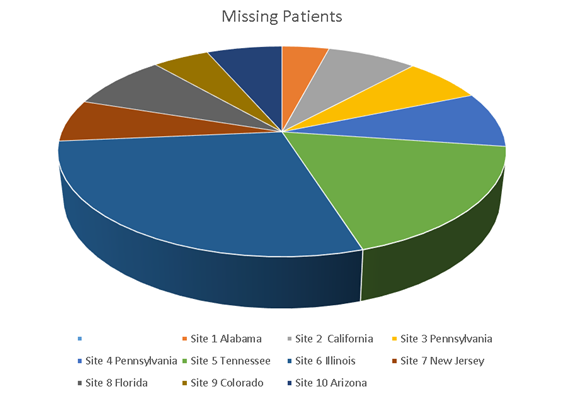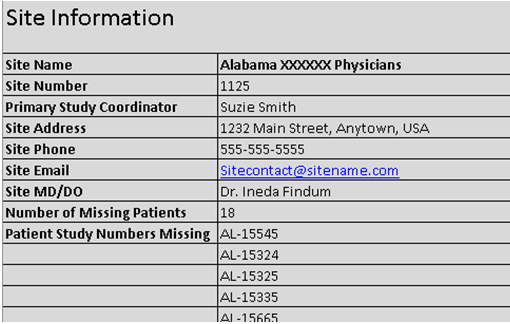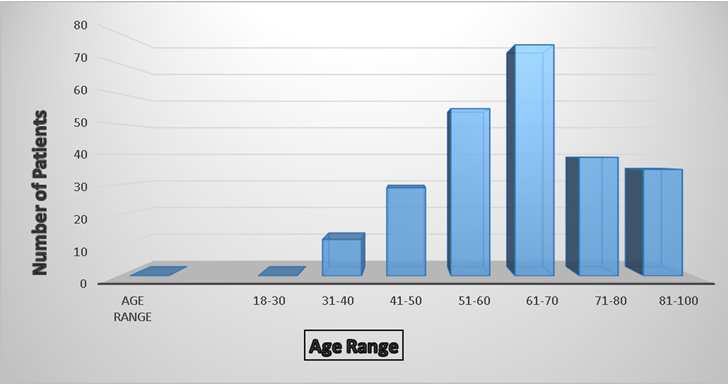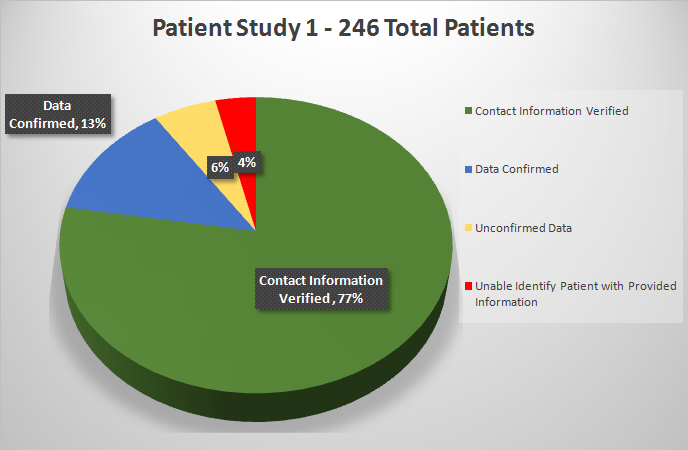LTFU Patient Search Case Study
During a recent engagement for a fortune 100 pharmaceutical company requiring multiple LTFU patient locates, we were asked to develop current and verified contact information on 246 living patients from 10 separate sites scattered throughout the United States. The patients were identified as participants in a ten year follow up study. The following is a breakdown of the assignment and how it was planned, executed and ultimately completed.

LTFU Patient Search Engagement
Representing a large pharmaceutical corporation, the study coordinator directed each of the ten sites (located in nine different states) to utilize our services to locate their missing patients. Some sites had as few as ten missing patients and others as many as seventy. Each site was provided with our standard spreadsheet with entry fields for the personal information regarding their missing patients. Fields included space for patient names, dates of birth, last known addresses, significant others, mode of transportation during site visits in the past and other potentially identifying information. Prior experience indicated that given the level of involvement each of these sites had with these patients over the prior ten years, some of the longer term staff may have developed personal relationships and familiarity with the patients. That information can in some cases become incredibly important.
As is standard with this type of engagement, no personal information related to the patients was ever transmitted to the CRO or the pharmaceutical company. The individual sites themselves were the only points of contact in corresponding with us regarding patient names and personal information. Any updates related to progress that were ultimately sent to the CRO were done so by using the patient’s identification number within the study as to maintain confidentiality, neutrality and compliance.


Patient Population
Although the specific drug study was not identified, nor was the type of medical affliction known (as to remain HIPAA compliant), we identified the patients within the following age tiers (as shown below). Identifying this information ahead of our searches is necessary to assess the strategy necessary to ensure utilizing an efficient process. Given that for this particular study, the majority of the patients were over sixty years old, we identified that certain investigative avenues were likely to be less effective than others. Coupled with the fact that two of the site study states with the most missing patients were known by our team to be less conducive for various types of searches. As a result, a tailored investigative process was designed using a wider array of investigative measures in order to ensure maximum results in an efficient manner.

Administrative Process
Once the missing patient information was gathered from each individual site, we were asked to report back the full list of patient ID numbers to the CRO. The completed process was to include individual completed lists to each individual site as well as a final patient ID list with one of four possible outcomes of our investigation (directed to the CRO for evaluation of the process). The outcomes were as follows:
1. Contact Information Verified (current address & confirmed phone number)
2. Contact Information Confirmed (through multiple sources, but no confirmed phone number)
3. Unconfirmed Data (inconclusive current address through more than one source)
4. Unable to uniquely identify patient (based on provided information)
The following is the outcome of our investigative process.

LTFU Patient Search Conclusions
• 90% of patients were returned to the individual sites with positive contact information
• 77% had verified telephone numbers to go along with confirmed residential addresses
• Only 4% were unable to be uniquely identified
o This was largely due to poor initial data as provided by the individual sites and/or very common names
• At the onset of the investigation, the total number of missing patients was 325; however, 79 patients were immediately identified as deceased
• As a follow-up to our research, we have since been engaged to identify next of kin on the 79 deceased patients and/or obtain copies of their death certificates where available
